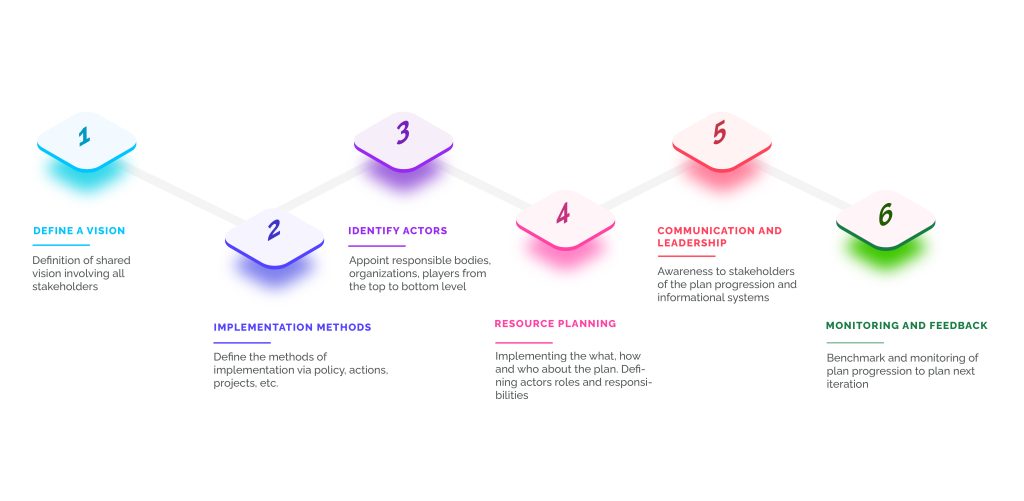BLOG
Sustainable Tourism: Role of Technology in Destination Stewardship
Sustainable Tourism: Role of Technology in Destination Stewardship
Introduction to Destination Stewardship:
According to the World Travel & Tourism Council’s (WTTC) 2020 Economic Impact Report, the travel and tourism industry generated 319 million jobs worldwide in 2019, making it one of the largest employers globally.
In terms of economic contribution, the industry generated $8.9 trillion in GDP, accounting for 10.3% of the world’s total economic activity.
However, it also has a significant impact on the environment and local communities, which must be considered to achieve sustainable development.
The future of tourism will depend on the ability of destinations to balance the needs of the industry with the need to protect the environment and the local communities.
Destination stewardship is crucial in this regard, as it helps to ensure that the tourism industry is sustainable and that the environment and local communities are not harmed.
Both sustainable development and destination stewardship share a common goal of balancing economic growth with environmental and social responsibility.
For example, sustainable development would encourage the use of renewable energy sources and energy-efficient buildings in a destination. While destination stewardship would encourage the protection of natural and cultural resources through conservation efforts and responsible tourism management.
Read our blog on Sustainable Tourism – Leveraging technology to create a better world.
We already see tourists increasingly demand sustainable and responsible travel options, and places that prioritize destination stewardship.
This leads to increased demand for sustainable tourism products and services, which in turn drive innovation and growth in the tourism industry.
Let’s consider the ways in which technology runs through the solutions side of things.
Utilizing smart devices and sensors in place, crucial data can be monitored at the resources level which can support decision-making and awareness.
The presence of IT can ramp up the pace of community awareness and educate visitors at the same time for taking conscious steps to support the ecosystem.
The presence of technology enables the key stakeholders namely – the public sector, private sector and communities to interact freely and create a digital trail of recovery of a destination.

Shared Stakeholders
In the concept of Destination Stewardship, it becomes extremely important to develop a mechanism that enables the major stakeholders of the initiative to hold a collective vision.
Each stakeholder must be able to prioritize, monitor, implement and support the measures for their goals.
There is clear ownership of departments, individuals and communities that enable them to define their activities and link them with appropriate systems to derive insights.
Data is the king
The concept of gathering data for resources and the journey of goals can help industries plan better and define benchmarks.
The employment of IoT devices and smart metering concepts will help monitor the usage of shared resources with enhanced transparency.
These insights will result in resilient supply chains, better consumer awareness, innovation and improved balance.
Efficient Resources Utilization
Imagine a self-registration platform hosted by the local public authority of a seasonal visited destination.
It allows all the local businesses to register themselves everywhere and take permits for the quarterly operation of their businesses.
Post operation in the first year, the businesses can simply re-activate their old account ID and perform basic verification steps to get the permits issued for the upcoming season.
A tedious paper-driven process can be easily reduced to a paperless digital trail with the integration of a few national identification services.
Similarly, imagine a unified public transport registration that authorizes a traveller’s card to be used in all public transport amenities (Metro, tubes, public buses and bicycles) for a period of 24hrs.
Not only does this reduce the digital fatigue of registering for these services on different platforms, but it also offers great convenience. It also enables less wastage of resources that would be required to have independent digital systems to run these systems.
Ubiquitous Value Chain
When we talk about bringing the ecosystem to speed with communication with travellers, businesses and local communities, a concept of education and awareness on multiple platforms often comes to mind.
With an intelligent omnichannel messaging system, the tips for supporting the environment, do’s & don’ts, community sensitive behavioural inputs can easily be passed on to travellers as and when they enter a particular destination.
The placement of informational systems in the form of LEDs can also be utilized to inform communities at a large scale for regions which have turbulent climate changes in a short span of time.
These content broadcasting IT systems are as effective in communication as they are in promoting the safety of individuals in eco-sensitive destinations.
Visitor Management
Earlier, we discussed the huge variance of demand and supply that has been observed in destinations over the years.
With the increase of expendable income in the middle-class segment and the availability of flexible financing options, travel has become affordable over the years.
In addition to leisure travel, the hybrid working model has enabled people to go on staycations, relocate to different places and make new destinations their homes.
A connected ecosystem to monitor incoming visitors from different sources not only supplies a cushion to the delicate supply chains but also allows the communities, public sector and private sector to take a pre-emptive approach to the management of destination activities.
While we see the massive IT systems above that impact destination management on a large scale, several Govt. authorities have identified breakthrough utilization of IT systems in the management of destinations.
- The Wyoming Office of Tourism in the US recommends local communities host an interactive business website that is connected to Social media channels to allow the dissemination of information to the citizens. It has also enlisted several agencies that support local businesses in marketing.
- Kypseli Neighbourhood in Athens adopted a collaborative method to engage with the ageing residents of the region and invite businesses, communities, and youth to reinstate the demand for the place.
- Hawai Tourism took a new step toward regenerative tourism by shifting from “me-tourism” to “we-tourism” which considers a holistic approach to involving communities in shaping the experiences of visitors with sensitivity towards local culture.
- LA City Master Plan for tourism pushes the businesses, communities and local authorities to work with standards and regulatory bodies to move towards Low-Carbon, green-energy future.
The crucial part
With the world moving towards a responsible approach to tourism, the business has redirected its views toward establishing a feedback system that involves all stakeholders and generates activities for businesses, visitors, communities and authorities to adhere to. It becomes of utmost importance to go through several stages of this exercise.

There are various facets of involvement to be kept in mind while approaching the plan of destination stewardship.
With the redefined focus on the environment and efforts like United Nations Sustainable Development Goals, Paris Convention, COP 26 and other climate action efforts, authorities, businesses and individuals need to come together in creating an ecology that leads to a benefit of all participants.
Technology will have a major role in taking all the stakeholders from all the stages of achieving the goals.
Smart systems to monitor the supply chain, and stakeholder interaction, enhance customer convenience, community engagement, carbon tracking and decision influence will further add spontaneity and transparency to the vision of “Destination Stewardship”.
Technology will have a lasting impact on destination management in the future with utilization like managing visitor flows in destinations leading to a controlled effect on the environment.
It will also be used in implementing new-age informational systems that educate communities in handling disruptions with incoming traffic.
Overall, the role of destination stewardship and technology in redefining tourism is essential to ensuring that tourism is sustainable, and responsible, and benefits all stakeholders.
By embracing these principles, the tourism industry can continue to grow and thrive while preserving the unique character and beauty of destinations worldwide.

Related Topics
Trending Topics
Want to build Super app for your business?



